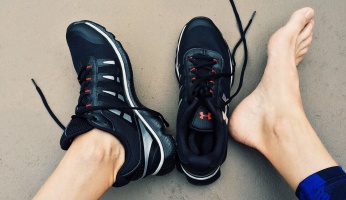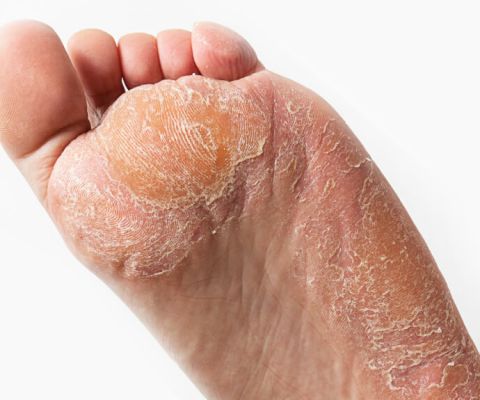Epsom Salt Foot Soak & Bath: Complete Guide
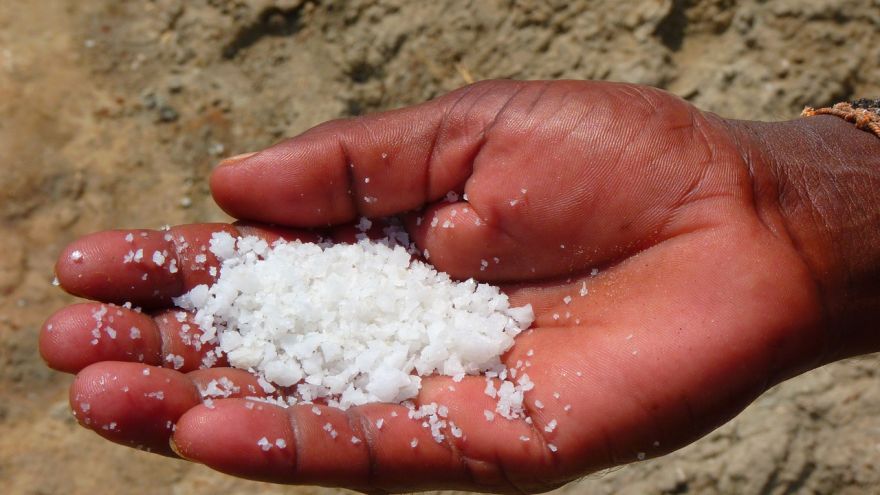 Epsom Salt Foot Soak & Bath: Complete Guide www.walkjogrun.net
Epsom Salt Foot Soak & Bath: Complete Guide www.walkjogrun.net Epsom salt has played an active role in the healing of mankind for over 200 years – and with good reason. It’s been the go-to cure-all for everything from sore feet to arthritis ever since it’s discovery in the early 1800’s.
A local farmer in Epsom, England discovered the mineral one day when his cows refused to drink the water. He tasted it and discovered it was bitter. The cows were then splashed with some of the Epsom water and were healed (of what we do not know). Epsom salt is also known as magnesium sulfate, or magnesium sulfate heptahydrate. Though Epsom salt is a crystalline structure resembling table salt, it’s actual makeup is mineral compound that is pure. The primary use for Epsom salts are as an additive to the bath for soaking sore extremities. It’s uses also include medicinal use as a laxative and also in the garden where it serves as food for various plants. The magnesium and sulfate components of Epsom salt can be absorbed through the skin states the Epsom Salt Council. The council also states that sulfates aid the human body in forming certain proteins and tissues and stimulate the production of digestive enzymes through the pancreas. The lack of magnesium leads to foot cramps and pain which is why Epsom salt foot soaks are recommended. Absorption of magnesium through the skin will aid in muscle and nerve relaxation lessening foot discomfort.
The Healing Properties of Epsom Salts
There may never be volumes of research published on Epsom salt but, enough evidence of its effectiveness has been documented throughout the years to support the claims of healing properties. The results of a study done to assess the absorption of magnesium through the skin were published in an issue of “Experimental Biology and Medicine” in June of 2014. The review article suggests that under the right conditions, skin absorption of magnesium could take place such as heat, increased salt concentrations, broken, scratched or cut skin.

How to Obtain the Maximum Benefits from an Epsom Salt Soak
Healing from the Outside In
An Epsom salt foot bath is a real treat for your feet! From the moment you slide your feet under the water, the combination of anti-fungal and anti-bacterial properties start going to work cleaning your feet while defending them against certain infectious substances. The elimination of these harmful microorganisms may keep any cuts or scratches on the skin from worsening or getting infected. An Epsom salt foot bath will also make you feel better because of the way it transforms ordinary tap water into a silky, gently fragranced experience. Following the steps listed below will help you in realizing the ultimate benefits available in your Epsom salt foot soak:
Step #1: The Epsom Experience – From the Outside
- Add one half cup Epsom salt to your basin filled with enough warm water to cover your feet up to the ankles.
- If using a standard size bathtub, add 2 cups Epsom salt to warm water.
- Soak for 30-60 minutes.
- For an enhanced experience, add a few drops of scented oil and enjoy the aromatherapy.
- Pain from conditions such as ingrown toenails, external soreness, psoriasis, and insulin sensitivity may all be reduced with an Epsom salt bath.
Step #2: The Epsom Experience – To the Inside
- The basic ingredients of Epsom salt are sulfate and magnesium which, when dissolved, enter the bloodstream through the pores of the skin.
- Epsom salt aids in the elimination of toxins as the process of reverse osmosis takes place.
- There are in excess of 300 enzymes related to nerve, muscle, and circulation which rely on magnesium to function properly.
- The sulfates contained in Epsom salt contribute to the maintenance of joints and skin tissue.
Recommendations:
To date, there are no negative side effects reported in using Epsom salt. However, it is a mineral structure and excessive use could result in dry or cracked skin. For best results, start by doing your foot soak twice per week for no longer than one hour. When you’re finished, apply moisturizer after drying. Persons with diabetes, nerve damage, poor circulation or recent foot injury should consult their doctor before use.

Epsom Salt – More than a Foot Soak
But Wait! There’s More!
It would be a great disservice to talk about Epsom salt exclusively in the context of foot therapy. There are so many additional health benefits to be realized in the use of this product. Note the following steps listed in obtaining relief from everyday aches and pains:
Step #1: Insomnia
- We all know there is an infinite number of reasons to keep us from sleeping. Much of it is due to stress which could be remedied by doing something nice for ourselves. In many cases we worry because we feel helpless or restricted in solving our problems, so, our mind starts working overtime. Soaking in Epsom salt really does help to reduce stress levels, migraines, and headaches by increasing your blood flow and improving circulation.
- Loss of sleep due to physical pain can also be remedied by taking an Epsom salt soak. Conditions such as the pain and swelling brought on by arthritis, tight muscles resulting from strenuous or extended exercise and pain from sunburn can all be reasons you can’t sleep. The good news is, these are also all good reasons to soak in Epsom salt.
- Leg cramps are notorious sleep stealers. If you suffer from nighttime leg cramps in your calves, start taking an Epsom salt bath before going to bed. The increased blood flow and improved circulation could be just the fix that will allow you to sleep peacefully all night long.
Step #2: Epsom Salt as a Detoxifier
- If we take our Epsom salt therapy to the next level, we can actually use it’s healing properties in combination with other known healers to detox our bodies. The following recipe is suggested to aid in the relief of pain caused by migraines, chronic pain, mental and physical stress to name just a few:
- Add 1-2 cups Epsom salt to warm bath water.
- Add between 10 and 20 drops of lavender or eucalyptus oil.
- Note: It is recommended that you dilute certain types of oils with a “carrier oil” such as jojoba, sweet almond, apricot or primrose which will also benefit your skin while you’re soaking.
- To this mixture add 1/3 cup apple cider vinegar
- One full cup of baking soda
- Soak for 20 minutes 3 times per week
- Note: Before you start doing extended soaking sessions start with the recommended 30-minute time limit. The temptation will be there to stay longer because it feels so good but, some experts feel the 30-minute soak is the best way to see how your body handles the chemicals while giving you an idea how the soak will benefit you.
Recommendations:
Using apple cider vinegar in combination with Epsom salt acts as a detoxifier. Together, they will stabilize the pH value of the skin while making it feel much softer and smoother to the touch. If you just want the benefits of taking an anti-fungal or antimicrobial soak, simply add one-third cup of apple cider vinegar to your bath water.

Hard at Work in the Garden
Epsom Salt for People…and Plants?
For more than 100 years, Epsom salt has been used as a plant supplement by gardeners and commercial growers. The agricultural community has benefitted greatly by handing down the remedies from using Epsom salt from generation to generation-passing on the fertilization techniques and knowledge realized from its use. Thousands of acres of farmland soil have been fertilized and benefitted by the addition of the lesser nutrients contained in Epsom salts such as magnesium and sulfur. Note the following steps to getting your garden to operate at its full potential:
Step #1: How Does It Work?
- The Epsom Salt Council states the white crystalline encourages bushier growth in plants producing more flowers. It also increases the production of chlorophyll while reducing the threat of slugs and other pests.
- From houseplants to orchids, Epsom salt used as a fertilizer nourishes the roots, leaves, and flowers when working in combination with nitrogen, potassium, and phosphorus.
- As many fertilizers do not contain sulfur or magnesium, using Epsom salt is a huge contributor to the necessary nutrients needed for optimal plant growth.
Step #2: The Science Behind Fertilizing with Epsom Salt
- The ratios of Epsom salt are not considered an exact science so a precise recipe is not available. A leading brand, however, recommends diluting one teaspoon of Epsom salt in one gallon of warm water and applying it to the plants once monthly.
- Other growers recommend ½ teaspoon Epsom salt per gallon with each watering while another group uses a larger concentration during the fall to encourage blooming.
- Note: If applying to orchids, it is advisable to be a little more conservative because of the sensitive root system.
Recommendations:
Anyone wanting to experiment with Epsom salt in their garden should consult an expert at a reputable nursery first. Every soil is different and depending on the climate and pH you have, you definitely don’t want to rush into trying various fertilization techniques. The use of Epsom salt as a fertilizer has been around a long, long time so make a call or go online and investigate the benefits and consequences of adding Epsom salt to your watering routine.
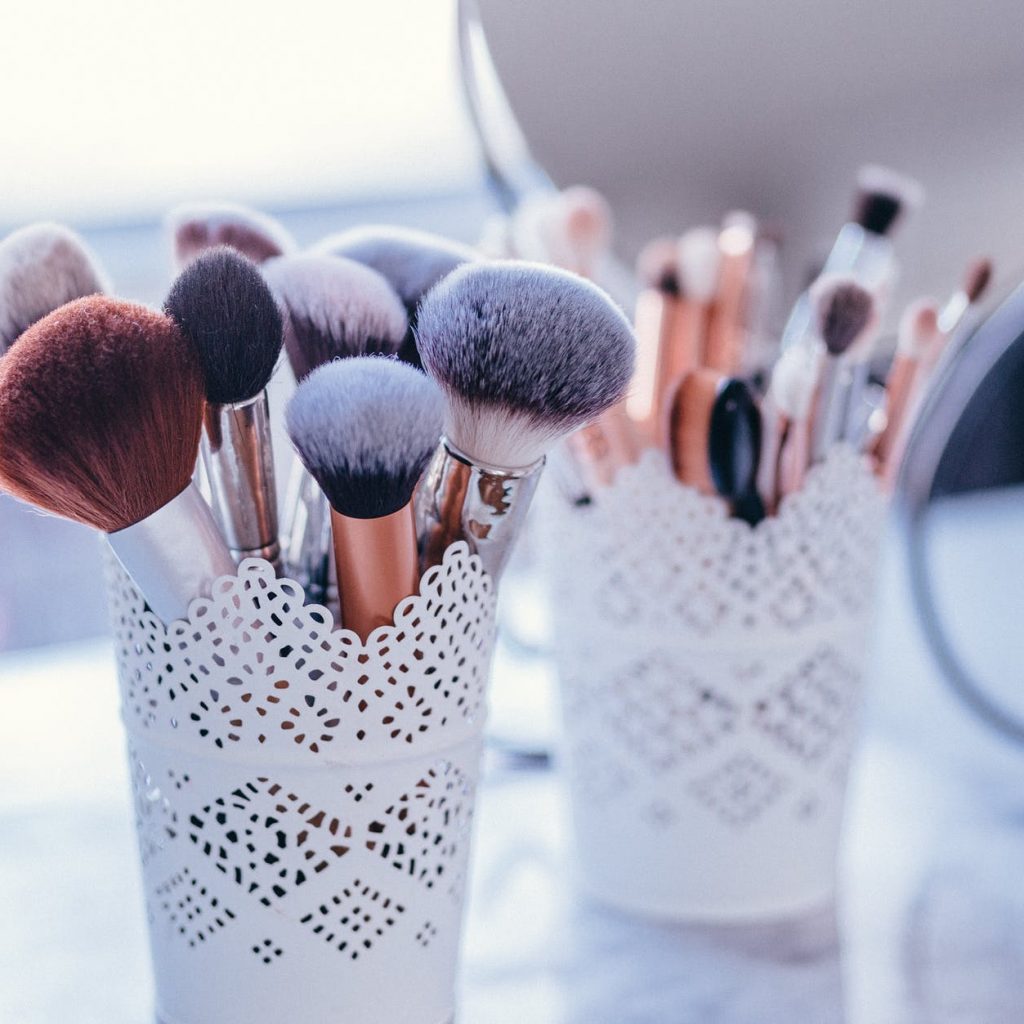
From the Top of Your Head to the Tip of Your Toe
The Beauty Benefits of Epsom Salt
Well, if you’ve read this far, it might just have something to do with the absolute mind-blowing versatility of Epsom salt. There doesn’t seem to be many ailments this (one of the least expensive available anywhere) products can’t treat or alleviate in some way. And just when you thought you’d seen it all, here comes another chapter in the many ways Epsom salt can make your life even better. Here are a few ideas that you can incorporate into your beauty and skincare routine:
Step #1: Exfoliation
- Combine ¼ cup petroleum jelly with a few drops of lavender oil and mix together with 2 cups Epsom salt. Apply to skin and dry patches and massage gently. Rinse and repeat as needed.
Step #2: Facial
- Mix ½ teaspoon Epsom salt into your current brand of cleansing cream and apply to face avoiding eyes. Massage gently and rinse with cool water. Pat dry, repeat as necessary.
Step #3: Bath Soak
- Fill the tub with an adequate amount of water to cover legs and arms. Add 2 cups Epsom salt and soak for 12 minutes 3 times per week. Add a few drops of essential oil for an extra pleasurable experience.
Step #4: DIY Bath Crystals
- Add a few drops of a fragrance oil to 2 cups of Epsom salt for a customized bath crystal that you created yourself. You may also like the notion of adding a few drops of food coloring or ½ teaspoon of glycerin to the mix. Your bath crystals should be stored in an airtight container.
Recommendations:
Epsom salt could very well make the perfect gift, especially with all the lovely fragrances you can add to it. Everybody knows someone who’s having a tough day. Whether it be at home running around with kids or a co-worker who has been on their feet all day. Male or female, there is someone in your life who would just love and appreciate a little memento like this.
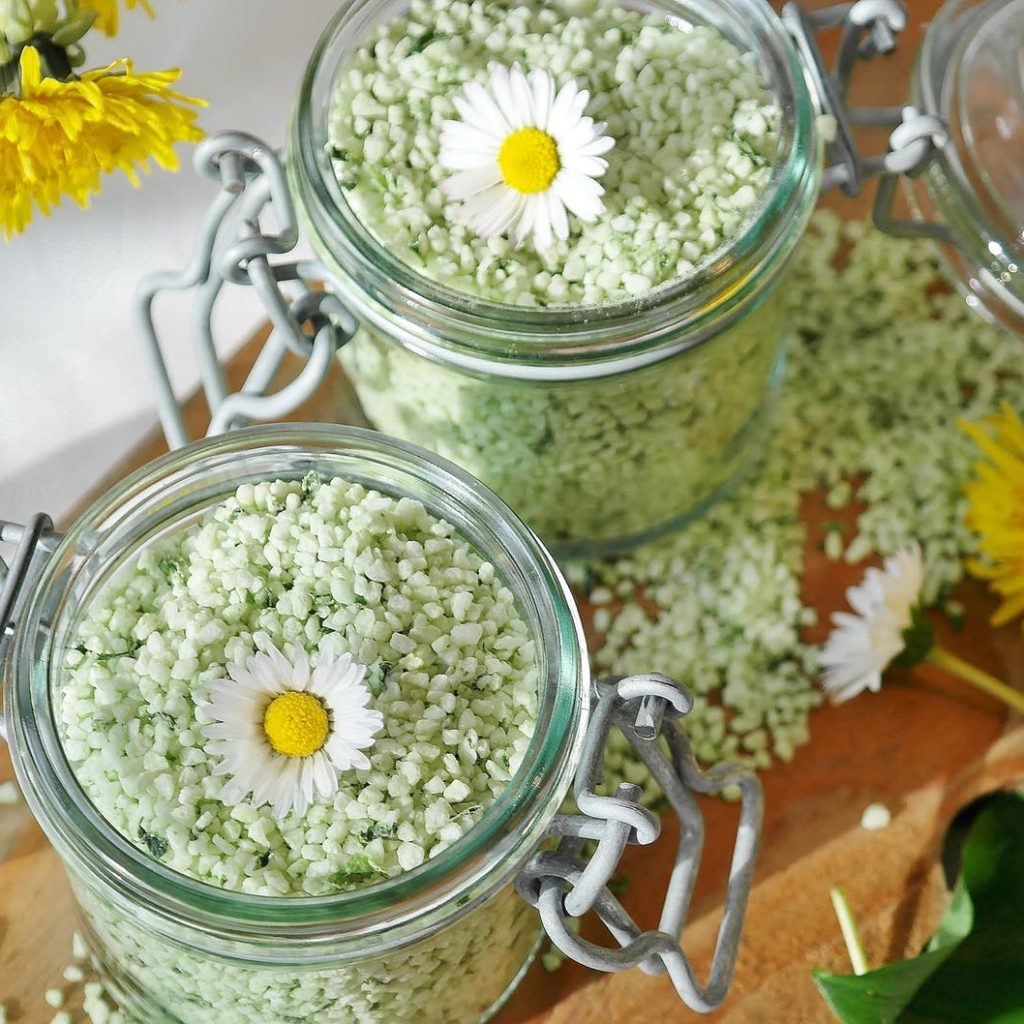
“Almost” Breaking News!
PROcure Epsom Salt Gel Voted Number 1!
On February 9th, 2018 PROcure Epsom Salt Rub was named product of the year for 2018. It is sold as a treatment for muscle aches and tension without being literally tied to the Epsom bath. Product of the Year is the largest consumer-voted survey in the world, consisting of 40,000 people who vote on product innovation. Let’s take a look at the steps we can take in sorting through the new products we’re introduced to for pain relief. How can we know which ones are right for us?
Step #1: How Can I Find the Best Products for Pain Relief?
- It would be impossible and very costly to pursue the daunting task of buying and trying every pain rub advertised as the perfect pain reliever for our needs.
- By having award ceremonies decided by consumer votes it helps enormously in narrowing down the field of potential candidates.
- The best feature about the PROcure line of products is you can take them with you:
- PROCURE Epsom Salt Recommended for sore muscles and painful extremities.
- PROcure Bruise Remedy Gel, 2 FL OZ
Step #2: Reputation and Longevity
- Sky Organics
- 100% Pure Magnesium Sulfate-Natural, USP Grade, Kosher, Non-GMO – Laxative, Muscle Tension
- Arthritis Bath Salt 32oz (2-Lbs)
- Epsom Salt Bath Soak with Frankincense Essential Oil & Vitamin C Arthritis Relief
- Dr. Teals
- Dr. Foot Achy Foot Epsom Salt Rub
- Recommended for tension, sore, achy legs, and feet. With Emu oil and Glucosamine 8oz
Recommendations:
This is one area where you will benefit from the reviews posted online. Muscle pain is very common and most folks are willing to try a few brands until they find the one that works best for them. Check the ratings, pros, and cons before buying. Check for shipping charges, return policies and comments. Playing sports, martial arts, swimming, standing – they all need muscle power, strength, and endurance for maximum growth and stability. But getting to that point may be tough on the body – why not consider an Epsom salt-based product to put in your bath or take on the road? This product has been around for hundreds of years with no notable side effects. It’s great for people who are hurting and makes a worthy fertilizer for plants. Think about helping someone have a better day by making them a bottle of Epsom bath crystals-and then, make one for yourself!
It’s amazing how animals instinctively know what’s good for them and what isn’t. Remember the cows in Epsom? They knew that drinking the magnesium and sulfate laden waters would be harmful, but when their owner splashed them with it they were healed! Relief from so many sources of pain can come to us the same way. If you’re suffering from sore muscles, poor circulation, nighttime leg cramps or just need a decent fertilizer additive, Epsom salt is here for you. Use it in your tub, or get a tube to take with you so you can soothe those aching muscles after your workout at the gym. And remember to get one for a friend!
Sources
- http://www.wrcbtv.com/story/37468562/procure-epsom-salt-gel-voted-product-of-the-year-2018
ProCure PR News Feb 9, 2018 - https://www.livestrong.com/article/282344-what-minerals-are-in-epsom-salt
What Minerals Are in Epsom Salt? by KATHRYN MEININGER Aug. 14, 2017 article - https://www.guardianlv.com/2014/04/epsom-salt-benefits-fact-or-myth
Nick Ng on April 14, 2014 blog - http://www.thegloss.com/fashion/4-beauty-recipes-featuring-epsom-salts
3 Beauty Recipes Featuring Epsom Salts 2008-05-19 by devadmin blog - https://healthandlovepage.com/epsom-salt-bath-foot-soak-benefits-recipes
- http://www.richmond.com/life/home-garden/orchids-epsom-salt-can-heal-aches-and-pains-and-fertilize/article_9eee54d3-f5e0-53b3-af63-1442a4feafb8.html
Orchids: Epsom salt can heal aches and pains and fertilize your plants By ARTHUR CHADWICK Aug 27, 2016






